Silver, a popular choice for those investing in precious metals, offers a unique appeal. While it may be more volatile than gold, its potential for high returns and strong demand makes it an attractive investment. Alongside supply and demand, various economic factors influence silver pricing, including inflation, US dollar strength, recessions, interest rates, monetary policies, geopolitical events, market manipulation, and Government policies/regulations. In this blog, we will detail each factor that impacts silver prices.
Silver Demand
Silver has massive industrial uses, such as electronics, solar panels, medical equipment, batteries, and military equipment. Nearly 50% of all silver demand comes from its industrial applications. Therefore, a rise in demand for these products could drive the price up. For example, silver is used heavily in electrical wiring and batteries, so as the demand for electric vehicles rises, the demand for silver will likely also increase. Silver's use of solar panels also represents an opportunity as governments worldwide are pushing for renewable energy. The International Energy Agency (IEA) projects that solar power capacity will account for 80% of the growth in global renewable capacity. This is the result of the construction of new large solar power plants, as well as an increase in rooftop solar installations by both companies and households.
Silver's jewelry and investment demand is also substantial. Since silver is much cheaper than gold, it appeals to many consumers. Silver is affordable, durable, hypoallergenic and versatile, which makes it popular in jewelry. As for its role in investments, this demand accounts for a significant portion of silver demand. Silver is a safe-haven asset, a tangible store of value, and highly accessible due to its price.
Silver Supply
The primary source of silver is mining, which is mined in two ways: primary silver mines and byproduct mining. Primary silver mining occurs when silver is the main product of the mine, and byproduct mining occurs when silver is extracted as a byproduct of mining other metals. The top silver-producing countries are Mexico, China, and Peru. However, there have been challenges in mining supply, such as the decline of ore grades, environmental regulations, geopolitical risks, and the lack of discoveries of silver deposits.
Another source of silver is recycling, which accounts for approximately 18% of the supply annually. It comes from industrial scrap, jewelry and silverware recycling, and photography waste. However, many modern electronics use nano-sized silver, making recovery more complex.
The final supply source is private investors and ETFs. Silver ETFs, or exchange-traded funds, are investment funds that hold physical silver in vaults. They are a popular way for investors to gain exposure to the silver market without having to store the physical metal. Bullion and coin hoarding are also quite popular, as many investors accumulate large amounts of silver during economic crises.
Over recent years, silver has been experiencing a supply deficit, meaning demand is outpacing supply. Since silver is so widely used, supply-demand imbalances, like the one we are currently experiencing, are more likely to occur. If this deficit continues, it could push prices higher. In 2024, the silver deficit was estimated to be 182 million ounces.
Inflation and Silver Prices
Inflation impacts silver's price because silver is seen as a store of value. As inflation weakens money's purchasing power, assets like silver become more attractive.
Historical Examples:
-
In the 1970s, high inflation and economic stagflation, a period of high inflation combined with economic stagnation, pushed silver prices from $1.75 per ounce (1971) to $49.45 per ounce (1980), a 2,726% growth.
Silver Price Chart
-
In the 2008 financial crisis, inflation fears and money printing in response to the crisis drove silver from $ 9 per ounce in 2008 to nearly $ 50 in 2011.
Silver Price Chart
-
In 2021-2022, there was an inflation surge due to the COVID-19 stimulus spending; silver prices jumped to $28 per ounce in 2020.
Silver Price Chart
Based on these examples, silver demand tends to rise if inflation remains high as investors seek protection. If inflation falls and central banks tighten policy, silver prices may fall.
US Dollar Strength: Impact of the US Dollar on Silver
Since silver is priced in US dollars, its value fluctuates with the currency's strength. Since silver is traded globally in US dollars, silver tends to fall when the USD is strong, making it more expensive for foreign buyers. However, silver prices tend to rise when the USD is weak, increasing silver demand globally.
Both silver and the US dollar are considered safe-haven assets, but they tend to perform differently during economic uncertainty. Depending on the investor, some may prefer cash and treasury bonds, while others may lean toward hard assets like silver. Given their different behaviours, having both in your portfolio to diversify and protect against market shifts is advisable.
Recessions
The impact of recessions on silver prices is much more complex than gold's. This is because silver is a dual metal: an industrial metal and a precious metal investment. Thus, silver's price is influenced by both industrial and investment demand.
Silver Price Behaviour during Recessions:
-
When haven demand increases, silver prices rise as investors seek protection
-
When the industrial demand declines, silver prices fall due to slowing global manufacturing
-
If the Federal Reserve cuts rates, silver prices rise.
-
Inflation boosts silver, whereas deflation weakens it.
-
Silver acts as a hedge when stock markets crash, strengthening the demand.
Interest Rates & Monetary Policies
Interest rates influence investment demand, inflation expectations, and currency strength—all which impact silver. Typically, when interest rates are low, silver prices rise. This is because bonds and savings accounts yield little return, making silver more attractive to investors. Low rates also weaken the US dollar and make borrowing cheaper, which boosts industrial demand.
When interest taxes are high, silver prices tend to fall. This is because higher interest rates make bonds and cash savings more attractive. They also strengthened the US dollar and caused slow economic growth, reducing the demand for silver.
Federal Reserve Policies
The Federal Reserve (Fed) controls interest rates and the money supply, influencing silver pricing. Silver becomes bullish when the Fed cuts rates, which is considered a dovish policy. The Fed lowers rates to stimulate the economy, weakening the dollar and raising inflation expectations, making silver attractive as a hedge.
Silver becomes bearish when the Fed hikes rates, which is considered a hawkish policy. The Fed raises rates to fight inflation or cool an overheated economy. This causes higher bond yields, which turns investors away from silver. It also strengthens the US dollar, which reduces global silver demand.
Geopolitical Events and Silver Prices
Geopolitical crises can trigger panic buying, economic uncertainty, inflation concerns and trade disruptions, all of which influence silver pricing. As we know, silver is a safe-haven asset which has increased demand during crises. Wars, sanctions and political instability increase government spending. This can cause inflation, making silver more attractive. Additionally, since over 50% of the global silver production comes from Mexico, Peru, China, Chile, and Russia, if conflicts or trade restrictions affect mining operations, the silver supply will tighten, pushing silver pricing higher. When there is political uncertainty, this also weakens investor confidence in curries and stock markets, which pushes the demand for hard assets like gold and silver. Lastly, de-dollarization also impacts silver prices. As many countries reduce reliance on the US dollar, silver and gold have become more attractive as alternative monetary assets. Central banks also increase silver and gold reserves, which drives demand upwards.
Silver Market Manipulation
For a long time, silver has been rumoured to be manipulated by large banks and institutional traders. Silver prices can be manipulated by naked short selling, selling silver contracts without owning silver to suppress prices. They can also be manipulated by high-frequency trading, which uses algorithms that execute thousands of trades per second to push prices up or down. Lastly, the COMEX paper silver distorts the pricing, as more paper contracts exist than physical silver.
Historical Examples of Silver Manipulation
-
JP Morgan silver rigging scandal in 2020: JP Morgan Bank paid $920 million in fines for manipulating silver prices using illegal trading strategies.
-
Hunt Brothers Silver Crisis: In the late 1970s, the Hunt brothers amassed silver as a hedge against inflation. Silver prices increased from $1.50 to $49.45 per ounce by 1980, because of stagflation and many other factors. While mainstream narratives claim they attempted to "corner the market," their real threat was to banks holding large short positions in silver. In response, the Chicago Mercantile Exchange (CME) and Federal Reserve changed margin rules, restricting silver purchases but allowing selling. This triggered a forced sell-off, crashing silver to $6 per ounce. Rather than manipulation by the Hunts, this event appears to be a coordinated effort to protect Wall Street interests.
Silver Price Chart
Government Regulations
Government policies and regulations significantly impact silver prices. The Government controls silver production through mining regulations, environmental policies, tariffs, and trade restrictions. Many governments are imposing stricter environmental policies, which can affect silver mining. For example, deforestation and indigenous land protections can restrict mining expansion. Carbon emissions and water use limits also significantly impact silver mining.
Tariffs can also affect silver, driving up the price or limiting the importing/exporting of silver. Higher tariffs on silver imports can raise silver prices due to the increasing cost. Export restrictions in major producing countries can also create supply shortages, increasing prices.
Conclusion
Economic trends, industrial demand, and investor speculation drive silver's price. Its volatility makes it riskier than gold but offers substantial upside potential. Inflation, interest rates, geopolitical events, and government policies affect its value. Silver remains a key investment and practical asset as the economy shifts and industries evolve. Understanding what moves silver prices can help investors navigate the market and make smarter decisions.
Silver and gold are essential assets for wealth preservation and financial security. Take advantage of market trends and start investing now!
Don’t miss a golden opportunity.
Now that you’ve gained a deeper understanding about gold, it’s time to browse our selection of gold bars, coins, or exclusive Sprott Gold wafers.
About Sprott Money
Specializing in the sale of bullion, bullion storage and precious metals registered investments, there’s a reason Sprott Money is called “The Most Trusted Name in Precious Metals”.
Since 2008, our customers have trusted us to provide guidance, education, and superior customer service as we help build their holdings in precious metals—no matter the size of the portfolio. Chairman, Eric Sprott, and President, Larisa Sprott, are proud to head up one of the most well-known and reputable precious metal firms in North America. Learn more about Sprott Money.
Learn More
You Might Also Like:




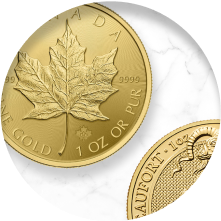

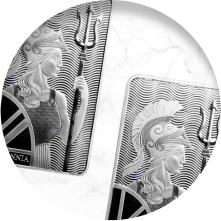
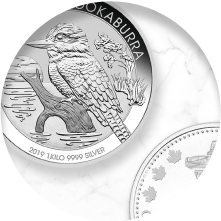
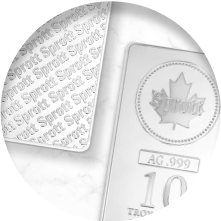

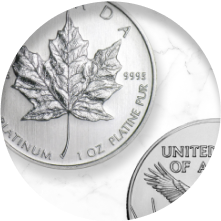

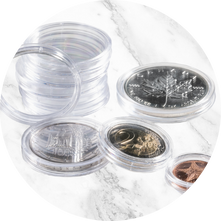
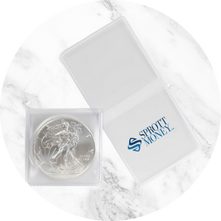



Share: